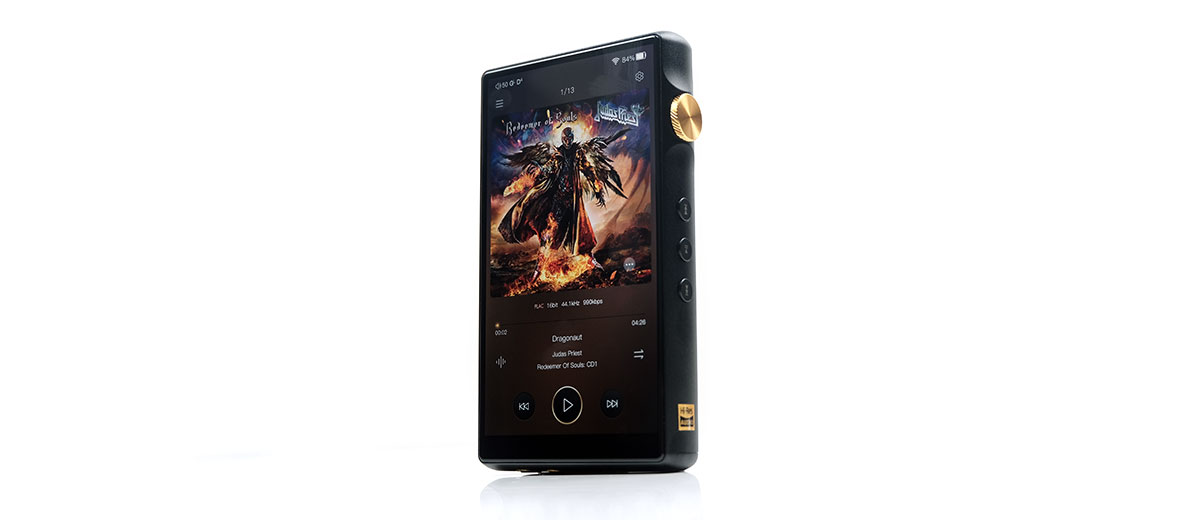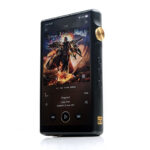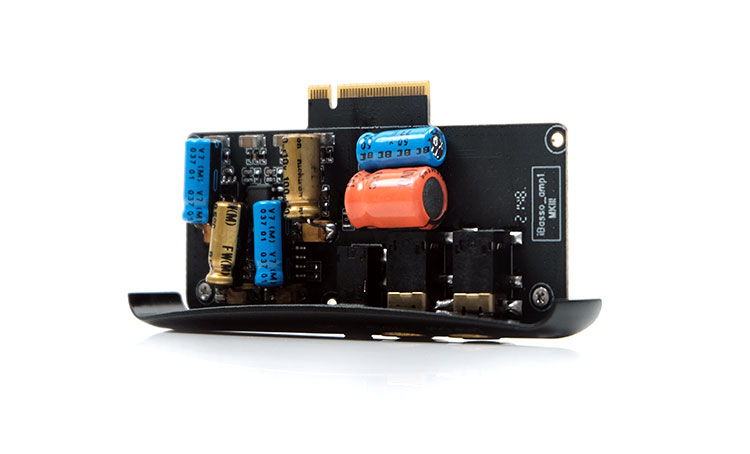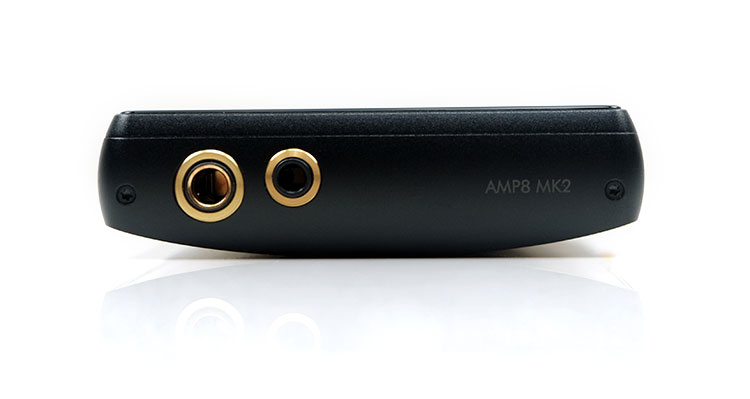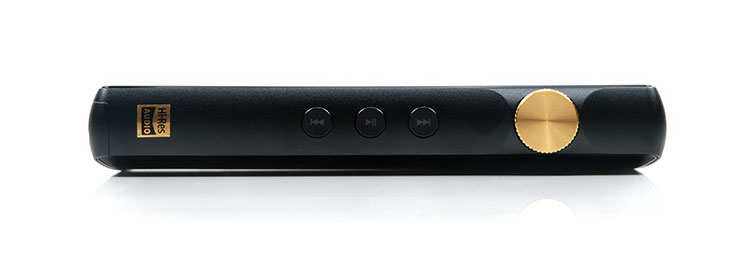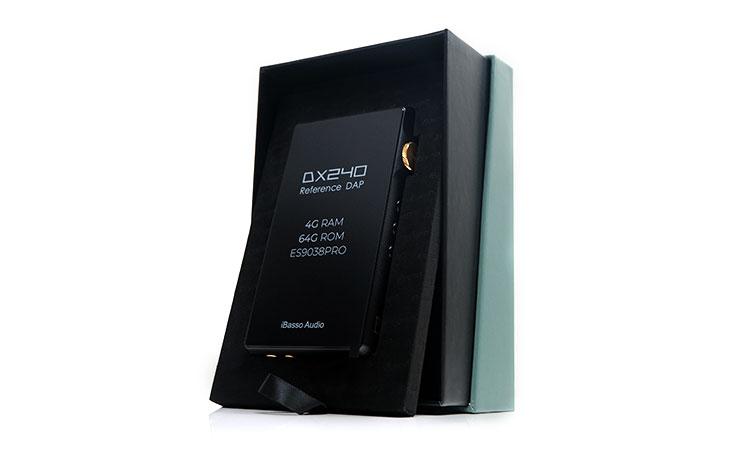Today’s review covers the new $949 iBasso DX240 DAP including the AMP1 MKIII card and the optional AMP8 MKII amplification card. The AMP8 MKII is sold separately for $219.
Disclaimer: This was sent to us as a sample for our honest opinion. Headfonics is an independent website with no affiliate links or services. We thank iBasso for giving us this opportunity.
To learn more about iBasso products previously featured on Headfonics you can click here.
Note, this 4-page article follows our latest scoring guidelines which you can read up on here.
Well, this review got massively delayed due to lockdowns, production runs, and holidays everywhere. But, here we are finally with our opinion on the new iBasso DX240 DAP and as a bonus, we will throw in the AMP8 MKII card which would typically get its own individual feature.
Given the focus on the DX300 series, the launch of an amp card compatible DX200 series DAP at the end of 2021 came as something of a surprise. We also now have the DX320 just around the corner also which tightens the niche value of the DX240 just a little bit more.
However, the DX240 does have a number of boxes the newer series does not tick. First, it is cheaper than both the DX300 and I presume the DX320 and arguably continues the excellent price to performance ratio of the older DX220 at $949.
The second is that it offers a distinct upgrade path for DX220 owners who have amassed a number of expensive amplifier cards and who have no wish to let go of them. Yup, the DX240 is compatible with all those old amp cards via a small optional extra DIY kit.
Tech Inside
DAC
In many ways, the DX300 was the outlier of iBasso’s higher-end units with its bold quad CS43198 DAC implementation or a doubling down of the budget DX160 chipset choice.
The DX240 returns to the Sabre fold though this time it’s a single channel flagship ES9038PRO rather than a dual ES9028PRO from the older DX220. This is a 4-core desktop-grade chip equivalent to 4 single-core ES9028PROs. On paper, the performance should be improved in terms of SNR and THD+N output despite being a single channel only setup.
The decoding capability of the DX240 seems to be an improvement compared to the DX300. You now have DSD512 and PCM 32BIT/768kHz limits which is a step up on the DX300’s 32BIT/385kHz and DSD256’s capability. The MQA unfolding capability on the DX240 is also increased from the DX300’s 8X to a maximum of 16X much like the DX300 MAX.
The codecs covered are wide-ranging and fairly complete. You will get everything from lossy to high-res native decoding. The full official list includes MQA, APE, FLAC, WAV, WMA, ACC, ALAC, ISO, M3U, and M3U8 but it will also handle DXD, DSF, and DFF files.
Like the DX300, the DX240 deploys a BIT for BIT system-wide playback architecture up to the max 32BIT/768kHz. That renders the Android core bitrate limitations moot. That means bit-perfect playback, not just in Mango OS or the Mango app but for any app that does not alter the source bitrate itself.
CPU
The older Arm Cortex CPU was always the stumbling block of the DX220 so it’s pleasing to see iBasso use the DX300’s much faster and smoother running Snapdragon 660c for the DX240. I do have to temper that by the reduction in the available RAM which has dropped from 6GB down to 4GB.
The Snapdragon 660c also comes with a default built-in BT5.0 and MU-MIMO 5G WiFi capability which iBasso seems to have taken advantage of with upgraded internal antennas for better transmission and volume from wireless streaming.

Digital Bridge
The DX240 also benefits from using the DX300’s digital bridge system called FPGA-Master. Here, iBasso has split the audio processing from the main Android/Mango OS process handling by using an FPGA between the Snapdragon 660c and the SPDIF out and ES9038PRO DAC.
That leaves the 660c primarily handling all the Android multi-tasking capabilities whereas the FPGA requests the audio data stream directly from the CPU for time-domain processing via two NDK femtosecond oscillators.
Essentially, the DX240 audio process is cleaned up for jitter with proper clock control before going to the DAC for conversion into the analog signal.
AMP1 MKIII
The DX240 comes with the 3rd gen AMP1 MKIII as its stock amplification card out of the box. and retains the Mango OS and app triple gain system to ensure sensitive IEMs playback is smooth and relatively noise-free.
The AMP1 MKIII offers a similar output configuration as the MKII with provision for 2.5mm TRRS, a 3.5mm TRS or SE output, and a 3.5mm variable line-out.
Though not quite as powerful as the AMP11 or AMP12 from the DX300, the new stock AMP1 MKIII performs quite well with a rated balanced output of 878mW into a 32Ω load and 128mW into a 300Ω load. SE is much lower though at 281mW@32Ω and 32mW@300Ω and may seem more suitable for IEMs than headphones.
On paper, the rated voltage seems similar to the MKII at 6.2Vrms for the balanced output and 3.1Vrms for the SE. I also believe the lineout works in much the same manner as the original AMP1 MKII with a variable voltage rating to a maximum of 3.0Vrms rather than a fixed output.
That being said iBasso has redesigned the AMP1 MKIII card with improved capacitors over the MKII and there does seem to be some clues there that it has improved noise and distortion performance. For example, the 3.5mm lineout THD+N has decreased by a further 3dB over the MKII at -110dB compared to -107dB.
AMP8 MKII
AMP8 MKII looks like an entirely different proposition from the stock card. For one, it’s a discreet design rather than opamp-based to maximize its voltage and current headroom potential whilst keeping the output impedance well below 1Ω for IEM users.
Secondly, its output power is stronger than the AMP1 MKIII at 980mW balanced into a 32Ω load and 281mW at 32Ω for its single-ended equivalent.
The voltage swing for the card’s dynamic range is very good also at 8V so headphones users will get more change out of the DX240, especially with its 4.4mm output. However, with the design geared to maximizing current headroom, electrostatic hybrid IEMs with those inefficient Sonion drivers should be ideal pairings.
Design
If the design looks familiar then you are not too far off. The DX240 almost looks like a carbon copy of the DX160 only on a larger scale. When I say larger, I mean height because everything else is close to the same or right on the money, particularly the shared 5″ screen dimension, the very smooth cornering, and near borderless aesthetic.
Is that a good thing? In my book yes it is because I have always found the DX160 to be one of my favored compact designs out of the entire DX Series from iBasso.
Save for the additional height to accommodate the cards, the DX240 follows the same design language with an overall dimension of 124mm*71.5mm*19.4mm. This is a size that feels relatively compact and very easy to operate with one hand.
The ease of operation is further enhanced by a curved frosted glass back that fits very snugly into your palm though will rock gently when placed on a flat surface and offer a challenge for stacking. This is one deviation from the original DX160 which has a flatter rear panel.
The weight of the DX240 is also quite hand-friendly at 205g. That is actually 35g less than the older DX220 chassis with AMP1 MKII.
Screen
Both the DX240 and the older DX220 share the same gorgeous borderless screen which is a Sharp OnCell FHD 1080p, (1920 x 1080), panel with a 448ppi pixel density. I can find nothing to complain about with this screen at all given its very smooth scrolling performance and moderate size which is about ‘sweet spotting’ portability with legibility.
It is no match for the huge real estate from the 6.5″ capacitive 60Hz 2340×1080 pixel IPS panel on the DX300 but then again the DX300 is far less portable as a result.
If you are coming from the DX160 and the DX220 you get the same excellent legibility, better dpi density than the DX160 720p version, and a far smoother refresh and scroll rate compared to the DX220 glass which was gimped by its inferior CPU.
I/O
Your inputs and outputs will depend in part on what amplification car you are using on the DX240.
On the digital side, iBasso retains a similar structure to their DX300 series with a USB-C port on the top for digital audio, USB-DAC duties, and charging. You also get a single micro-SD slot on the left side with support for SDXC and SDHC cards and an onboard storage capacity of 64GB which is par for this price range.
The SPDIF port also remains on the top panel though this is now just coaxial rather than optical, a change iBasso introduced a while back also on the DX300. However, it does mean a higher decoding capability of 24BIT/384kHz compared to optical’s 24BIT/192kHz limitation.
On the analog side, the AMP1 MKIII offers 2.5mm TRRS balanced, 3.5mm TRS SE, and a variable 3.5mm TRS lineout. AMP8 MKII does not offer any lineout but instead offers both SE and balanced 3.5mm TRS and 4.4mm Pentaconn output options.
All sockets are tight, there is no play in the jack connection with gold plated finished instead of the ring protrusions of the DX220. If you look at the DX160 and the DX300 finishing you will find the DX240 sockets are done in the same way.
Controls
The interactive features of the DX240 follow previous iBasso DAPs with the physical control side looking like a blown-up version of the DX160’s gold-accented volume dial and playback control button array on the right panel.
Like most iBasso DAPs, the DX240 uses a multi-function rotary dial that controls volume, turns the LCD screen on and off, and powers up or shuts down the device. Android 9 also provides the ability to customize or reverse the direction of the controls via a setting software layer.
One other useful change from the DX300 design is the reintroduction of the button labels which were missing on their former flagship. That makes things the controls a bit easier to understand if you are new to iBasso DAPs.
Also, it might just be my hand shape but the curved back seems to draw the natural pressure of my fingers away from the physical buttons on the side. That was an issue I had with the DX300 buttons which were too easy to pressure when gripping the device. That does not seem to be the case here with the smaller curvier DX240.
The rest of the control system is done entirely through the touch panel options as well as some wireless options. The multi-touch experience of the DX240 IPS panel is smooth and snappy, much faster than the older ARM-powered DX220, and closer to the DX300 experience.
Battery Life
The 4400mAh 3.8V Li-Polymer battery inside the DX240 is more or less the same battery throughout the life span of the DX200 series, including the DX200 and D220.
With the default AMP1 MKIII amp card the DX240 is rated at 11 hours and I am going to presume that’s a control test result on the SE output with a reduced volume setting, the screen turned off and lossy mp3 files being played. That is the norm for most battery assessments.
On SE, using mp3 files you should be able to get close to that without any significant button mashing and the use of connectivity options such as BT or WiFi. With the DX240 balanced output, you can expect a dip top under 10 hours. Particularly if you throw on demanding loads well above 32Ω, hi-res files, or retain a very bright screen setting.
Some nuanced observations though would make me say the DX240 battery performance is now much better than before. For one, on the DX220 you had a resolution option to drop to 720p to conserve battery life from dipping to 8 hours or less when on 1080p. The DX240 no longer requires that option and stays north of 8 hours on all outputs.
The second is the clock cycle which is double that of the DX220 at a maximum of 2208.0MHz compared to just 1008.0Mhz. The better CPU is clearly helping with the DX220 performance.
Packaging & Accessories
The split box packaging for the DX240 is very much an iBasso design ID looking very similar to the DX300 retail box and internal layout save for the switch to the green theme as opposed to blue.
It is a relatively simple packaging experience but no less professional and offers decent protection for the contents with a display slot for the DAP on top and the accessories stored below.
Accessories are consistent with the previous DX300 release with the inclusion of a USB-C to USB-A charging and data transfer cable, a dummy load burn-in cable, and a SPDIF to coaxial conversion short IC. You also get a few soft film-type screen protectors but no tempered glass versions and none are pre-applied.
The final accessory is a low-profile transparent silicone case that fits the DX240 tightly though not the prettiest looking. I believe you can get a classier leather green variant though I cannot comment on how good the fit is as we do not have one here.
Click on page 2 below for software impressions
Click on page 3 below for sound impressions, pairings, and wireless performance
Click on page 4 below for select comparisons




